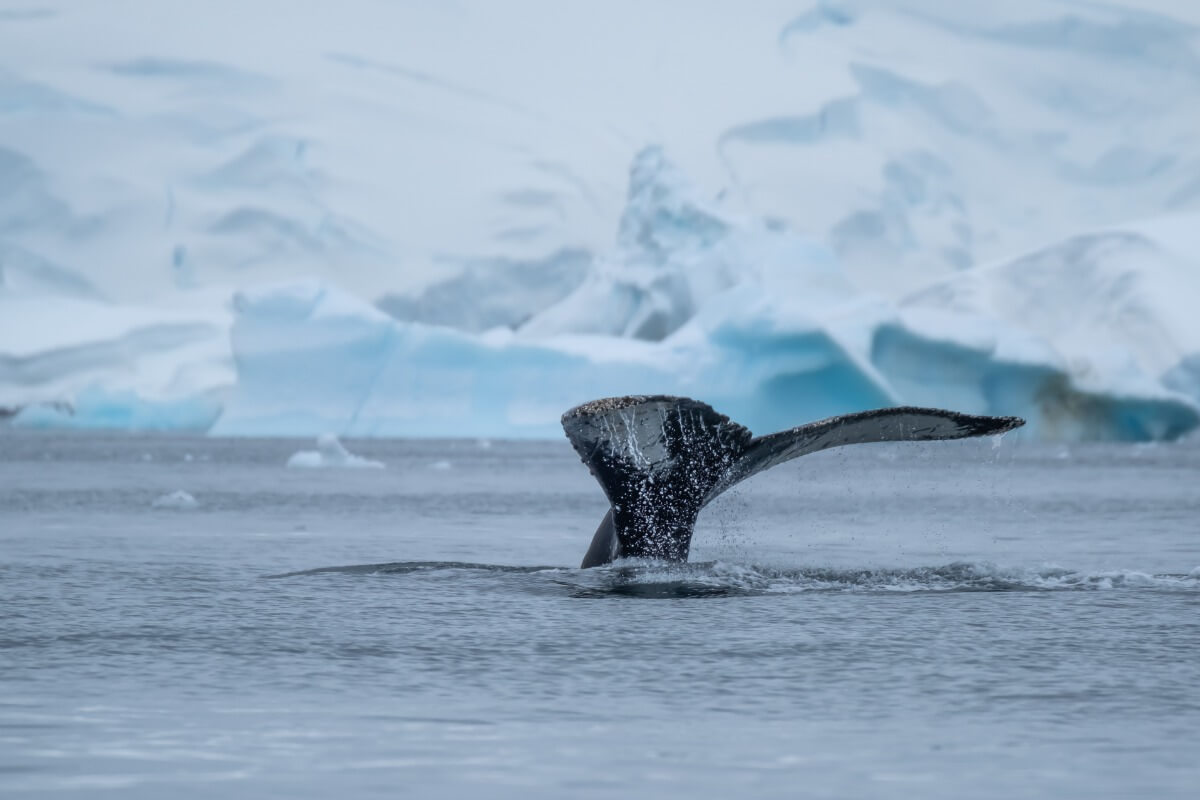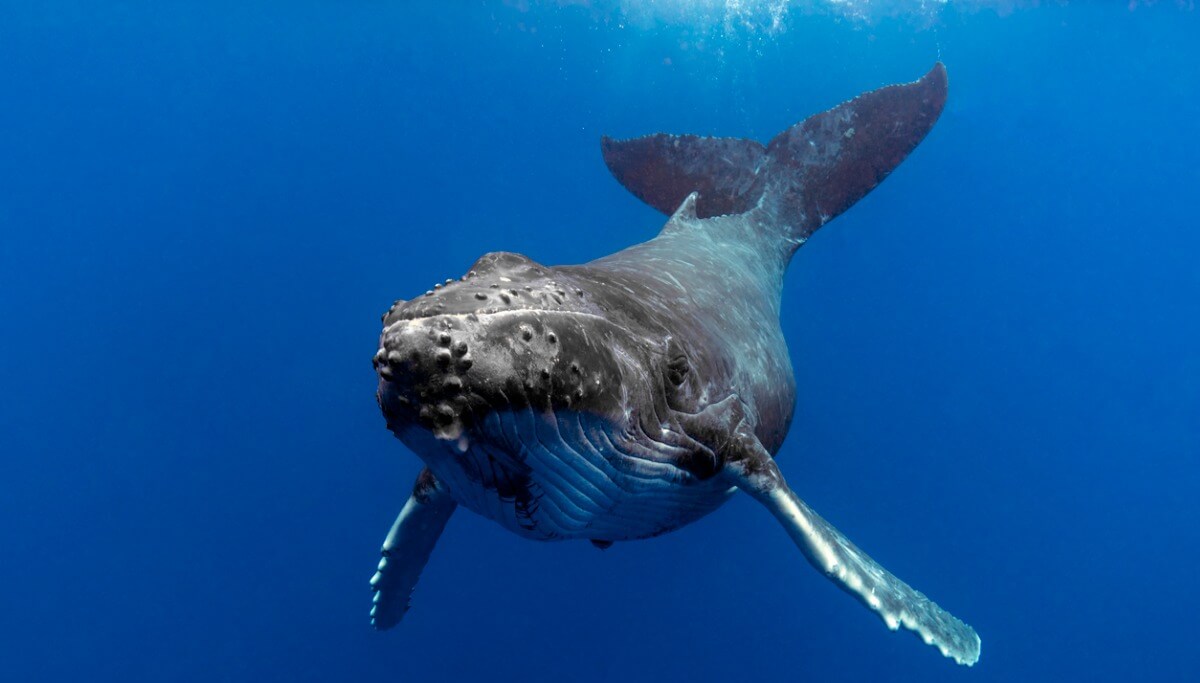Whalien 52: The Loneliest Whale in the World?

The planet’s oceans are vast and largely unexplored. Their meticulous observation allows us to open a window to the innumerable secrets that still hide there. This is the case with Whalien 52, a marine creature only known through recordings of its song.
This animal has never been seen, but it’s believed to be a whale, thanks to the characteristics of its very particular song. However, no other known specimen of its species is capable of singing at such a high frequency, which oscillates over 52 hertz.
These are vocalizations which are normally imperceptible to humans, and which form a fundamental part of cetacean social behavior. Therefore, it has often been speculated whether this whale is able to communicate or if it lives in isolation from its peers. If you want to learn more about it, keep reading!
The discovery of Whalien 52
William Watkins, a pioneering researcher at the Woods Hole Oceanographic Institution (WHOI), first detected the sounds of Whalien in 1989. Along with his team, Watkins recorded the same vocalizations in 1990 and 1991.
After the end of the Cold War, the US Navy partially declassified its Sonic Surveillance System (SOSUS). This set of hydrophones, initially designed to detect submarines, allowed WHOI scientists to monitor this animal annually for 12 years, starting in 1992.
The follow-up culminated in a study that saw the light of day in 2004, very shortly after Watkins’ death. This publication captured the attention of the media, moved by the story of a whale that sang at a frequency different from all the others.
The cetacean acquired great cultural importance. Songs were written and movies were produced about it. However, this great media impact brought with it a series of speculations about the animal, which may not be altogether true.

The sound and features of Whalien 52
Although it was difficult for its discoverers to believe, the mysterious sound seemed to come from a whale. However, this tone is very different from the other known whale vocalizations.
The blue whale sings with a frequency between 10 and 40 hertz, and the fin whale sings at 20 hertz. These are the 2 species with the most similar vocalizations, but Whalien 52 sings at 52 hertz, something never seen before.
This particular individual has never been located, and so the species it belongs to is unclear. It could be a hybrid between several species or a single species with certain peculiarities. There’s also the possibility, although very remote, that it is a new species.
Even so, experts indicate that this animal is a blue whale (Balaenoptera musculus), either totally or partially. To reach this conclusion they rely on their behavior and the structure of their sounds.
Where does the mysterious whale live?
Be that as it may, its unique call offers a special opportunity to study the behavior of a single whale in an acoustic and non-invasive way. Normally this can be done with groups, but not with specific individuals for such long periods of time.
The follow-ups indicate that this cetacean has a marked migratory behavior, very typical of blue whales. It lives in the North Pacific, relatively close to the American coasts. Its range extends from southern Alaska to Baja California.
Every year, the WHOI research team detected the whale between August and September, and tracked its movements until January or February. After this time interval, Whalien moved out of range of the hydrophones.
A song of unrequited love
Much of the popular success of this cetacean stems from media speculation. As Whalien 52 sings on a different frequency than the others, several magazines proposed that other whales wouldn’t be able to hear it.
In this case, Whalien wouldn’t be able to communicate with it peers and wouldn’t be able to reproduce. Hence the nickname by which it is known: the loneliest whale in the world. Hundreds of people have empathized with this animal’s “tragic”story. However, it’s unlikely to be true.
Biologists, researchers and other experts believe that, even though it sings at a different frequency, other whales could hear it without a problem. This is true for blue whales, fin whales, and humpback whales.
In addition, some of them consider that the sounds of this marine mammal aren’t so rare. Local whale dialects are widespread and other cases of idiosyncratic calls are known. Whalien 52 may just be a little weird, but this isn’t a problem for him/her.
It’s impossible to find out if this animal can reproduce, as it has never been found. Even so, it’s clear that it has no problem surviving, moving, and feeding. Its long life is proof of this.
There are even a number of more optimistic possibilities. The peculiar call of this animal could constitute a strategy to attract more potential mates.

Recent data indicates that there could be several whales that emit these strange vocalizations. Whalien 52 may not be alone after all. A whole group of similar animals, perhaps hybrids, could keep it company.
All cited sources were thoroughly reviewed by our team to ensure their quality, reliability, currency, and validity. The bibliography of this article was considered reliable and of academic or scientific accuracy.
- https://www.washingtonpost.com/sf/style/2017/01/26/the-loneliest-whale-in-the-world/
- http://www.bbc.com/earth/story/20150415-the-loneliest-whale-in-the-world
- https://www.whoi.edu/oceanus/feature/a-lone-voice-crying-in-the-watery-wilderness/
- Watkins, W. A., Daher, M. A., George, J. E., & Rodriguez, D. 2004. Twelve years of tracking 52-Hz whale calls from a unique source in the North Pacific. Deep Sea Research Part I: Oceanographic Research Papers, 51: 1889-1901.
This text is provided for informational purposes only and does not replace consultation with a professional. If in doubt, consult your specialist.